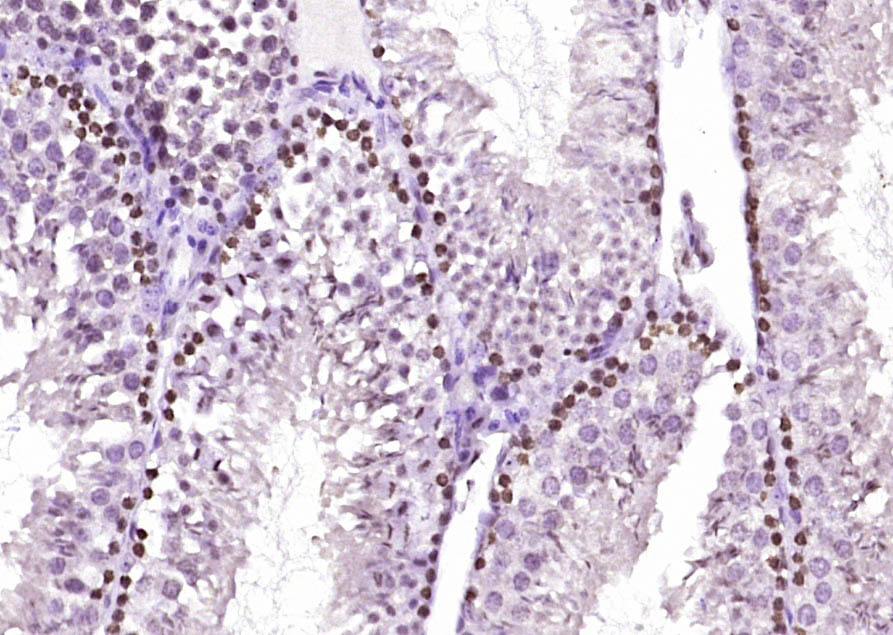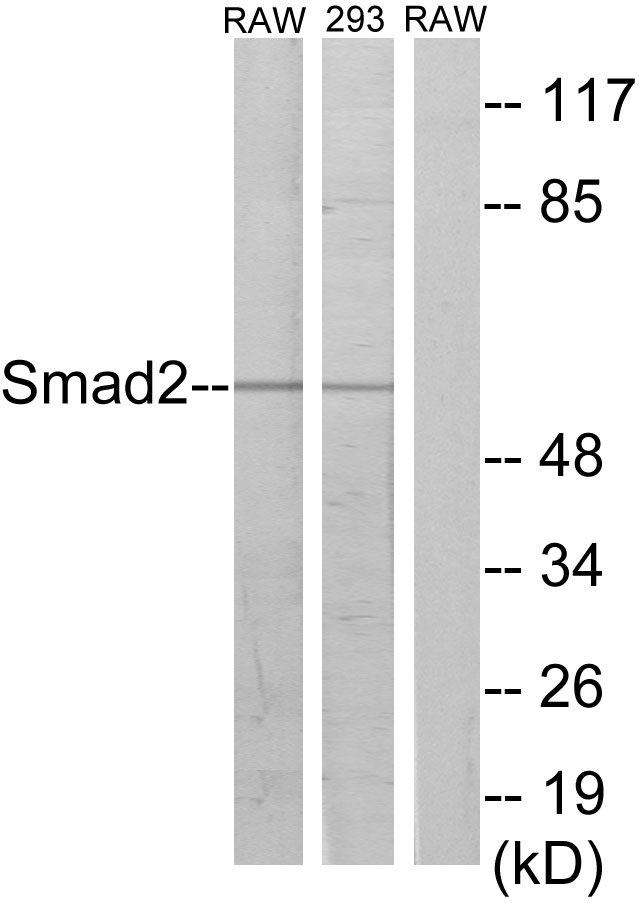SMAD2 antibody
GTX111075
ApplicationsImmunoFluorescence, Western Blot, ImmunoCytoChemistry, ImmunoHistoChemistry, ImmunoHistoChemistry Paraffin
Product group Antibodies
ReactivityHuman, Mouse, Rat
TargetSMAD2
Overview
- SupplierGeneTex
- Product NameSMAD2 antibody
- Delivery Days Customer9
- Application Supplier NoteWB: 1:500-1:3000. ICC/IF: 1:100-1:1000. IHC-P: 1:100-1:1000. *Optimal dilutions/concentrations should be determined by the researcher.Not tested in other applications.
- ApplicationsImmunoFluorescence, Western Blot, ImmunoCytoChemistry, ImmunoHistoChemistry, ImmunoHistoChemistry Paraffin
- CertificationResearch Use Only
- ClonalityPolyclonal
- Concentration0.55 mg/ml
- ConjugateUnconjugated
- Gene ID4087
- Target nameSMAD2
- Target descriptionSMAD family member 2
- Target synonymsCHTD8, JV18, JV18-1, LDS6, MADH2, MADR2, hMAD-2, hSMAD2, mothers against decapentaplegic homolog 2, MAD homolog 2, SMAD, mothers against DPP homolog 2, Sma- and Mad-related protein 2, mother against DPP homolog 2
- HostRabbit
- IsotypeIgG
- Protein IDQ15796
- Protein NameMothers against decapentaplegic homolog 2
- Scientific DescriptionThe protein encoded by this gene belongs to the SMAD, a family of proteins similar to the gene products of the Drosophila gene mothers against decapentaplegic (Mad) and the C. elegans gene Sma. SMAD proteins are signal transducers and transcriptional modulators that mediate multiple signaling pathways. This protein mediates the signal of the transforming growth factor (TGF)-beta, and thus regulates multiple cellular processes, such as cell proliferation, apoptosis, and differentiation. This protein is recruited to the TGF-beta receptors through its interaction with the SMAD anchor for receptor activation (SARA) protein. In response to TGF-beta signal, this protein is phosphorylated by the TGF-beta receptors. The phosphorylation induces the dissociation of this protein with SARA and the association with the family member SMAD4. The association with SMAD4 is important for the translocation of this protein into the nucleus, where it binds to target promoters and forms a transcription repressor complex with other cofactors. This protein can also be phosphorylated by activin type 1 receptor kinase, and mediates the signal from the activin. Alternatively spliced transcript variants encoding the same protein have been observed. [provided by RefSeq]
- ReactivityHuman, Mouse, Rat
- Storage Instruction-20°C or -80°C,2°C to 8°C
- UNSPSC12352203
References
- Oyelakin A, Sosa J, Nayak KB, et al. An integrated genomic approach identifies follistatin as a target of the p63-epidermal growth factor receptor oncogenic network in head and neck squamous cell carcinoma. NAR Cancer. 2023,5(3):zcad038. doi: 10.1093/narcan/zcad038Read this paper
- Terasaki M, Inoue T, Murase W, et al. A Fucoxanthinol Induces Apoptosis in a Pancreatic Intraepithelial Neoplasia Cell. Cancer Genomics Proteomics. 2021,18(2):133-146. doi: 10.21873/cgp.20248Read this paper
- Gluck C, Glathar A, Tsompana M, et al. Molecular dissection of the oncogenic role of ETS1 in the mesenchymal subtypes of head and neck squamous cell carcinoma. PLoS Genet. 2019,15(7):e1008250. doi: 10.1371/journal.pgen.1008250Read this paper
- Gu J, Liu Y, Wu H, et al. Huangqi Shengmai Yin Protects against Radiation-Induced Cardiac Fibrosis Injury by Regulating the TGF-β1/Smads and MMPs. Evid Based Complement Alternat Med. 2019,2019:1358469. doi: 10.1155/2019/1358469Read this paper
- Song S, He X, Zeng Z, et al. Blocking transforming growth factor-beta reduces the migration and invasion of the residual tumour after TAE. Am J Transl Res. 2019,11(4):2155-2167.Read this paper
- Thiyagarajan V, Tsai MJ, Weng CF. Antroquinonol Targets FAK-Signaling Pathway Suppressed Cell Migration, Invasion, and Tumor Growth of C6 Glioma. PLoS One. 2015,10(10):e0141285. doi: 10.1371/journal.pone.0141285Read this paper
- Chen G, Wang T, Uttarwar L, et al. SREBP-1 is a novel mediator of TGFβ1 signaling in mesangial cells. J Mol Cell Biol. 2014,6(6):516-30. doi: 10.1093/jmcb/mju041Read this paper






![FACS analysis of HeLa cells using GTX01034 SMAD2 (phospho Ser250) antibody [SD207-1]. Red : primary antibody Black : unlabelled control Dilution : 1:50](https://www.genetex.com/upload/website/prouct_img/normal/GTX01034/GTX01034_20200303_FACS_237_w_23053121_650.webp)